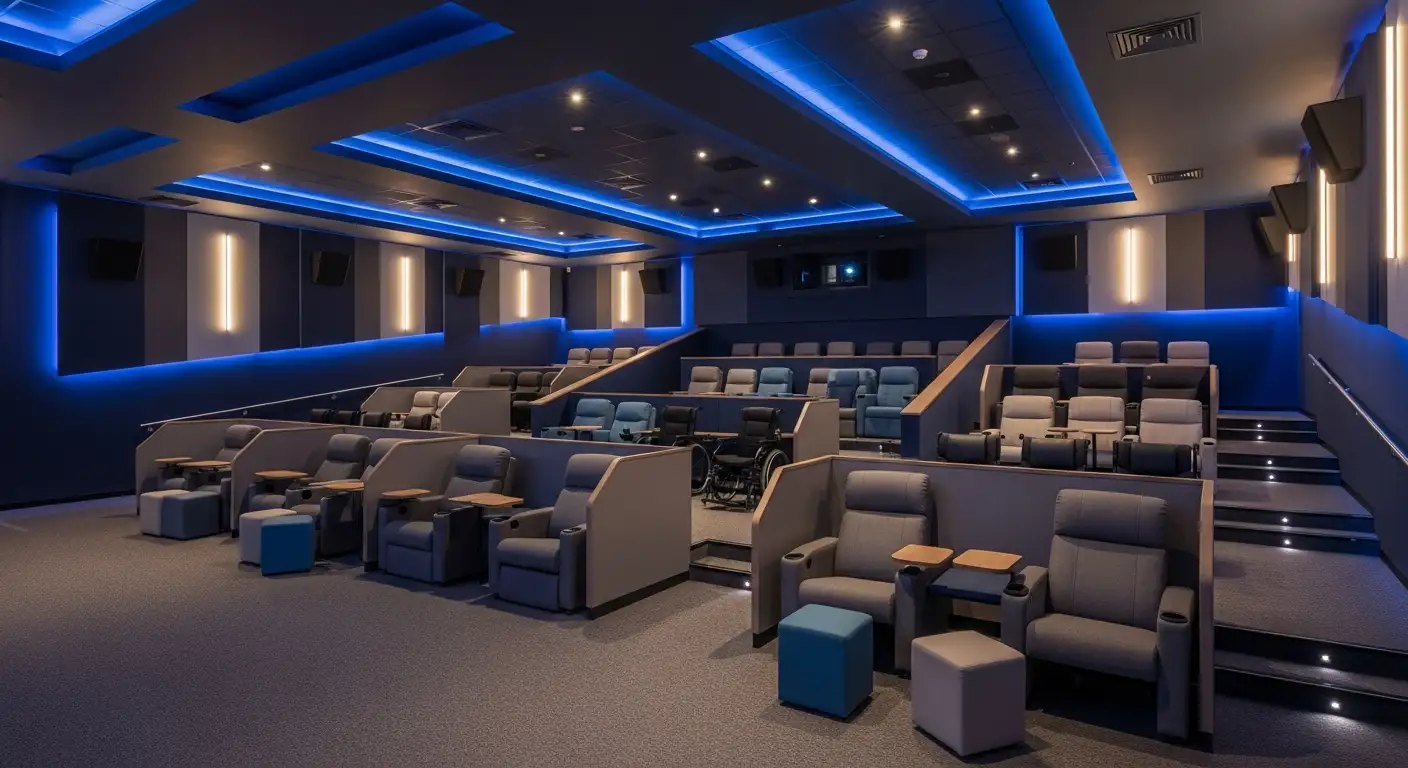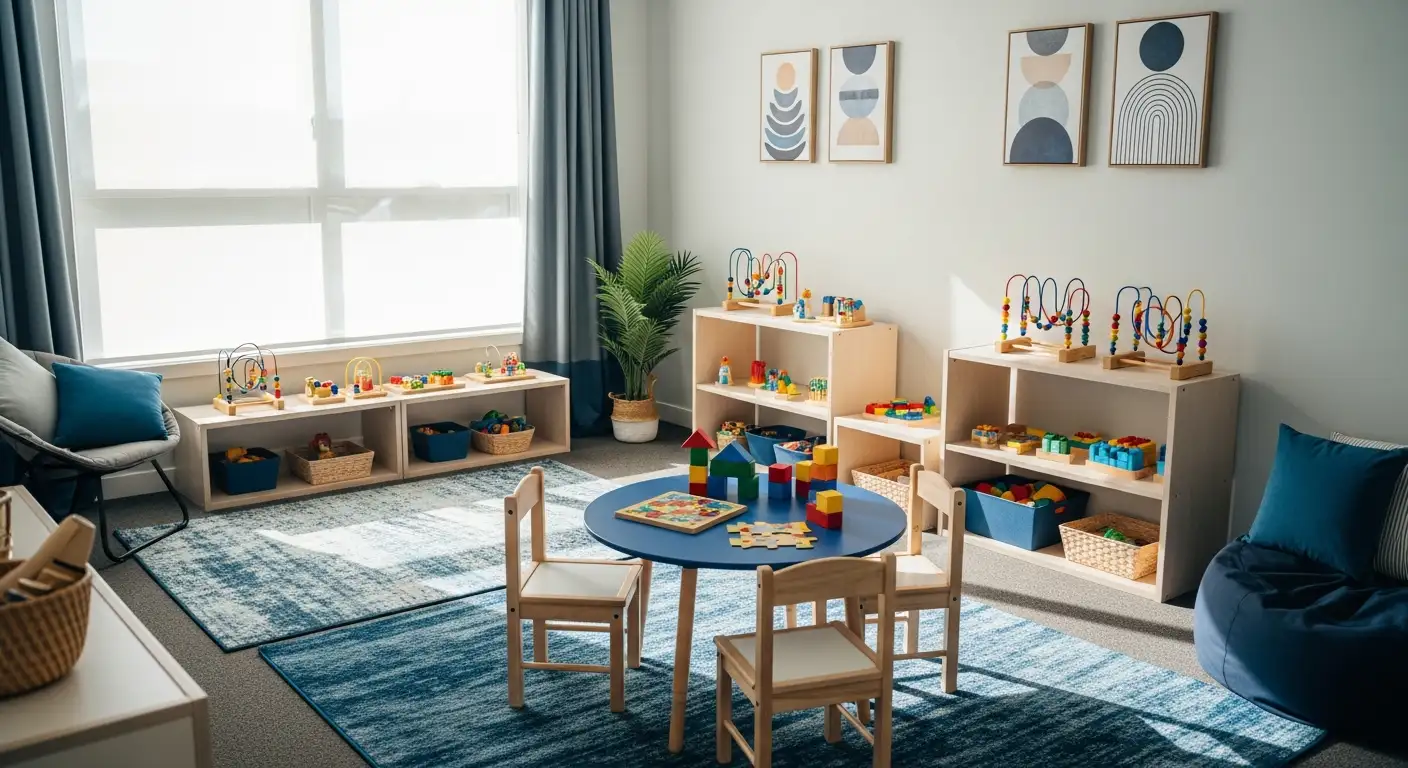Supporting Autistic Adults in Developing Life Skills
Empowering Independence: Behavioral Strategies to Enhance Life Skills in Autistic Adults

Understanding Life Skill Development in Autistic Adults
Developing practical life skills is a critical challenge and goal for many autistic adults seeking greater independence and improved quality of life. Supported by evidence-based behavioral therapies, these skills span communication, social interaction, daily living, and emotional regulation among others. This article explores how specialized interventions, especially Applied Behavior Analysis (ABA) and complementary therapeutic approaches, support autistic adults in acquiring and refining these abilities tailored to individual needs and settings.
What is Applied Behavior Analysis (ABA) Therapy and Its Role in Autism Support?
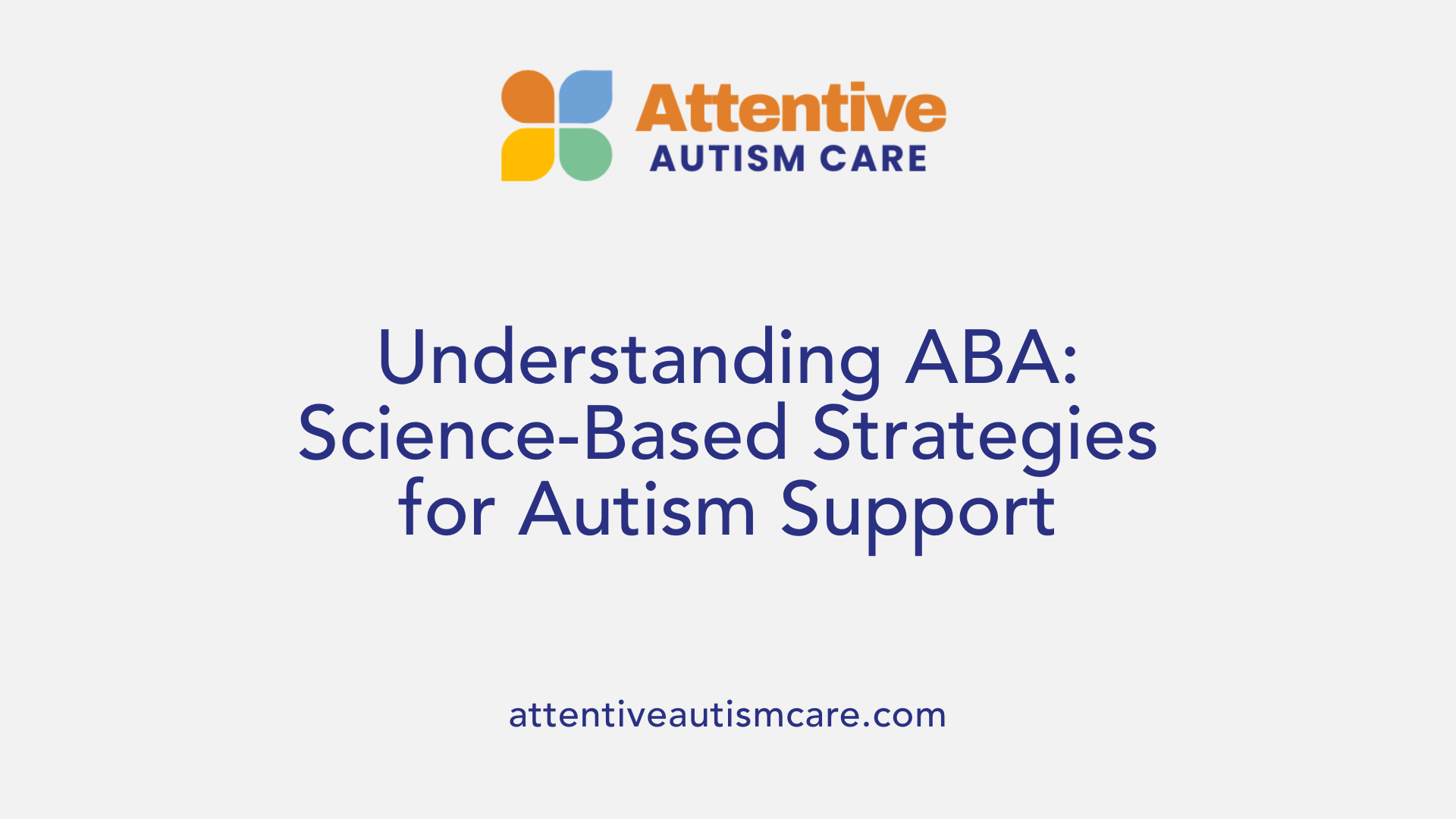
Definition of ABA therapy
Applied Behavior Analysis (ABA) therapy is a scientific approach focused on understanding and modifying behavior. Originally developed through decades of research, ABA aims to enhance learning by identifying how behaviors work and are influenced by the environment.
Core principles: positive reinforcement and behavior analysis
ABA centers on increasing beneficial behaviors by reinforcing them positively while reducing harmful or hindering behaviors. A fundamental technique is positive reinforcement, where desired behaviors are rewarded to encourage repetition. ABA employs the 'A-B-C' model—Antecedent (what happens before a behavior), Behavior itself, and Consequence (what follows)—to analyze and modify actions systematically.
ABA applications for autism including communication and daily living skills
For individuals with autism, ABA therapy targets crucial areas such as communication, social skills, self-care, play, motor abilities, and academic competencies. Tailored programs help build these skills gradually, promoting greater independence and quality of life.
Settings and flexibility of ABA programs
ABA programs are highly adaptable. They can be implemented in diverse environments like home, school, and community settings, allowing customization to fit each individual's unique needs and schedule. Program intensity and goals are constantly adjusted based on ongoing progress monitoring.
Use of A-B-Cs approach to behavior modification
By dissecting behaviors into Antecedents, Behaviors, and Consequences, ABA providers identify triggers and responses, enabling targeted interventions. This method helps in systematically encouraging positive behaviors while reducing unwanted ones.
Evidence base and scientific support for ABA
ABA is recognized as an evidence-based practice with a large body of research demonstrating its effectiveness. It is supported by major health organizations and has shown improvements in intellectual, language, daily living, and social skills among individuals with autism spectrum disorder.
What is Applied Behavior Analysis (ABA) therapy and how is it used for autism?
Applied Behavior Analysis (ABA) therapy is a scientific, evidence-based treatment developed since the 1960s that aims to improve function and reduce problematic behaviors in individuals with autism spectrum disorder (ASD). It utilizes techniques such as positive reinforcement, detailed behavior analysis, and individualized programming to help increase skills like communication, social interaction, attention, and daily living abilities, while decreasing harmful behaviors. ABA is highly flexible and can be delivered in various settings, including home, school, and community, with program intensity tailored to each child's needs—often ranging from 10 to 40 hours per week. Progress is continuously monitored through data collection, allowing adjustments to ensure effective intervention. Supported by organizations like the US Surgeon General and American Psychological Association, ABA is considered a core element of autism treatment, especially when implemented early and with trained professionals.
Who Provides ABA and Behavioral Therapy Services?
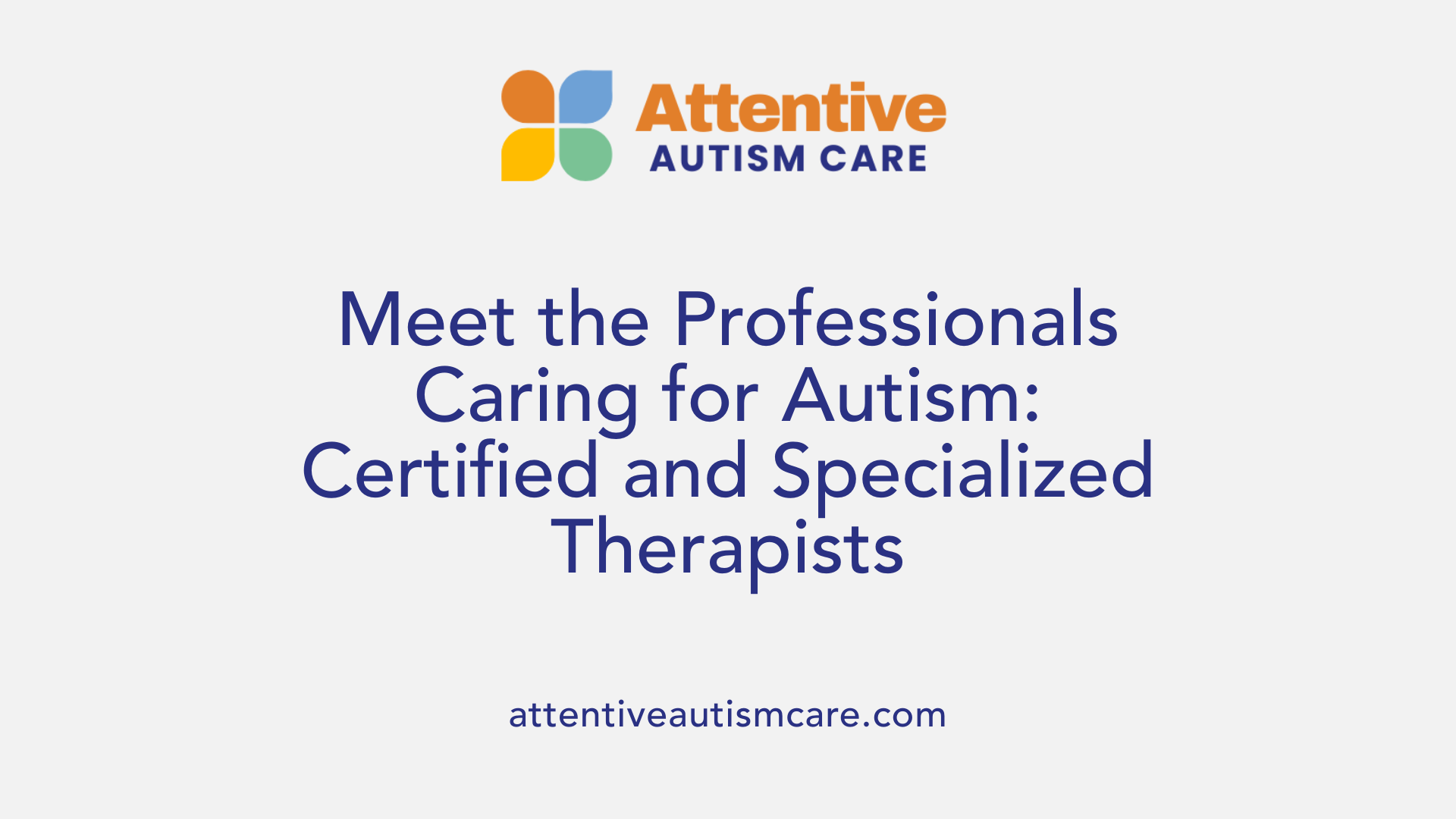
Who typically provides behavior analysis therapy for individuals with autism?
Behavior analysis therapy for individuals with autism is primarily delivered by professionals trained specifically in Applied Behavior Analysis (ABA). The central role in providing ABA services is often held by Board Certified Behavior Analysts (BCBAs). These specialists design, oversee, and regularly evaluate therapy programs to ensure they meet an individual's unique needs. BCBAs employ data-driven strategies and tailor interventions to foster skills like communication, social interaction, and daily living abilities.
What other professionals contribute to ABA and behavioral therapy?
Besides BCBAs, Registered Behavior Technicians (RBTs) frequently administer day-to-day ABA therapy sessions under the supervision of BCBAs. In addition, effective treatment often involves a multidisciplinary team including psychologists, speech therapists, and occupational therapists. These experts collaboratively support areas such as emotional regulation, language development, sensory integration, and fine motor skills, providing a comprehensive approach for individuals with autism.
Where is ABA therapy typically provided?
ABA therapy is versatile and delivered across diverse settings tailored to individual preferences and needs. Common venues include:
- Home environments – fostering skills in familiar surroundings
- Educational settings – integrating with school programs for consistency
- Community locations – promoting real-life social interactions
This flexibility helps ensure generalization of skills and maximizes progress toward independence.
How can individuals access ABA services and what are insurance considerations?
To begin ABA therapy, families or individuals typically consult healthcare or developmental specialists who can provide referrals to qualified ABA providers. Verifying insurance coverage is a crucial step since policies vary; some private insurance plans and Medicaid programs cover medically necessary ABA treatments. Many providers and organizations, such as Autism Speaks, offer resources to connect with credentialed ABA professionals.
Understanding staff qualifications, treatment approaches, safety protocols, goal-setting processes, therapy hours, waitlists, and accepted insurance plans are important questions to address when selecting a provider.
| Professional Role | Description | Settings |
|---|---|---|
| Board Certified Behavior Analyst (BCBA) | Designs and supervises ABA therapy programs | Home, School, Community |
| Registered Behavior Technician (RBT) | Implements daily behavior plans under BCBA supervision | Home, School, Community |
| Psychologists | Provide mental health support and assessment | Clinics, Schools, Telehealth |
| Speech Therapists | Enhance communication skills | Clinics, Schools, Home |
| Occupational Therapists | Support sensory and daily living skills | Clinics, Schools, Home |
Core Benefits of Behavioral Analysis Therapy for Autistic Adults

What are the key benefits of using behavioral analysis therapy for autism?
Behavioral analysis therapy, most notably Applied Behavior Analysis (ABA), brings significant improvements in communication, social skills, and adaptive behaviors for autistic adults. Through evidence-based approaches, it helps increase desirable behaviors such as effective language use, social interaction, and daily living skills while actively reducing harmful or problematic behaviors that might hinder life participation.
Improvements in communication, social skills, and adaptive behaviors
ABA targets core skill areas like communication and social engagement by using methods such as positive reinforcement which rewards beneficial behaviors, encouraging their repetition. This leads to enhanced abilities in initiating conversations, interpreting social cues, and participating meaningfully in social settings.
Reduction of harmful or problematic behaviors
By analyzing behavior patterns through the Antecedent-Behavior-Consequence (A-B-C) framework, therapists identify triggers and consequences of behaviors, enabling the formulation of strategies to reduce factors like aggression, self-injury, or disruptive conduct. This fosters safer and more positive daily experiences.
Customized programming and data-driven progress tracking
ABA therapy is highly individualized. Each person’s therapy plan is tailored to their unique strengths, challenges, and goals. Board-Certified Behavior Analysts (BCBAs) create personalized interventions, continuously assessing and adjusting them based on data collected systematically during therapy sessions. This ensures optimal progress and responsiveness to changing needs.
Promotion of independence and social participation
Beyond behavior change, ABA focuses on developing skills that increase independence in daily living, work, and leisure activities. This empowerment promotes fuller participation in community life and supports autistic adults in achieving greater autonomy.
Enhanced emotional regulation and quality of life
ABA supports emotional regulation by teaching skills that help manage stress and anxiety, which often accompany autism. Improved coping enhances overall well-being, contributing to a higher quality of life.
| Benefit Area | Description | Therapeutic Elements |
|---|---|---|
| Communication and Social Skills | Improved language, social responsiveness, and interaction skills | Positive reinforcement, social skills training |
| Behavior Management | Reduction of harmful or interfering behaviors | A-B-C analysis, behavior modification strategies |
| Personalized Approach | Tailored programs responsive to individual needs and ongoing progress tracking | BCBA oversight, data-driven adjustments |
| Independence and Participation | Development of daily living, work, and leisure skills | Life skills training, adaptive behavior focus |
| Emotional Regulation | Enhanced ability to manage stress and emotional challenges | Coping strategies, emotional regulation techniques |
Behavioral Techniques to Develop Adaptive Living Skills
What Techniques Are Used to Improve Adaptive Living Skills in Autism?
Applied Behavior Analysis (ABA) employs several effective behavioral strategies to enhance self-help, leisure, work, and hygiene skills in individuals with autism spectrum disorder (ASD). One core method is positive reinforcement, where desired behaviors are rewarded to increase the likelihood of their recurrence. This approach is central to helping adults build and maintain essential adaptive skills.
How Do Graduated Guidance and Interruption of Incorrect Actions Help?
Graduated guidance involves providing step-by-step assistance to teach new skills. As the individual gains competence, support is gradually reduced, promoting independence. Meanwhile, interruption of incorrect actions prevents the reinforcement of undesired behaviors by redirecting or stopping inappropriate responses, ensuring learning is focused and effective.
Why Is Data Collection Important in ABA?
Systematic data collection is foundational to ABA therapy. Therapists monitor progress closely by recording behavioral responses, which allows for personalized adjustments in intervention strategies. This individualized approach ensures that techniques remain effective for each person’s unique needs and goals.
What Deficits Are Typically Addressed in Adults with ASD?
Many adults with autism face challenges in areas like daily living skills, including personal hygiene, work habits, leisure activities, and self-care routines. ABA techniques specifically target these deficits to foster greater independence, improve quality of life, and enhance social integration.
Can You Provide Examples of Developing Independent Living Skills?
Examples include teaching budgeting and money management for work-related competence, training in cooking and household chores to support self-care, and guiding participation in leisure activities through structured routines. These targeted interventions help individuals take on more responsibilities confidently and successfully in daily life.
Complementary Therapies Supporting Life Skill Development
Cognitive Behavioral Therapy (CBT) for Anxiety, Depression, and Emotional Regulation
CBT is a structured, evidence-based therapy ideal for autistic individuals managing emotional challenges such as anxiety and depression. It focuses on identifying and modifying unhelpful thoughts and behaviors, enhancing emotional regulation. Its predictable format meets the specific needs of many autistic adults, helping them develop coping skills.
Mindfulness-Based Therapy and Stress Reduction Techniques
Mindfulness-based interventions like Mindfulness-Based Stress Reduction (MBSR) promote awareness and acceptance of present experiences. These techniques reduce rumination and stress, leading to improvements in anxiety and emotional wellbeing. Mindfulness helps autistic adults gain greater control over their emotional responses and daily challenges.
Social Skills Training (SST) Programs such as PEERS YA
Social Skills Training programs, exemplified by PEERS for Young Adults (PEERS YA), use role-plays, psychoeducation, and homework to enhance social knowledge and responsiveness. These group-based programs focus on practical social interaction skills with caregiver involvement, leading to sustained improvements in social engagement and relationships.
Occupational Therapy for Sensory Integration and Daily Living Skills
Occupational Therapy (OT) assists autistic individuals in developing independence in daily living activities. It integrates sensory integration therapy to help regulate responses to sensory inputs, which supports improved emotional regulation and social participation. OT also targets fine motor skills and self-care routines, fostering autonomy.
Speech and Language Therapy Including Augmentative Communication
Speech and Language Therapy addresses communication difficulties by enhancing verbal and non-verbal skills. For non-verbal individuals, augmentative and alternative communication (AAC) tools—like speech-generating devices or Picture Exchange Communication System (PECS)—are incorporated to promote effective communication and reduce frustration.
Below is a summary table on these complementary therapies:
| Therapy Type | Main Focus | Key Benefits |
|---|---|---|
| Cognitive Behavioral Therapy | Managing anxiety, depression, emotional control | Improved coping skills and emotional regulation |
| Mindfulness-Based Therapy | Stress reduction, present-moment awareness | Reduced anxiety, better stress management |
| Social Skills Training (PEERS YA) | Social interaction and relationship skills | Enhanced social responsiveness and engagement |
| Occupational Therapy | Sensory integration, daily living skills | Greater independence and sensory regulation |
| Speech and Language Therapy | Communication skills and AAC use | Effective communication and reduced frustration |
Social Skills Training: Building Connections and Community
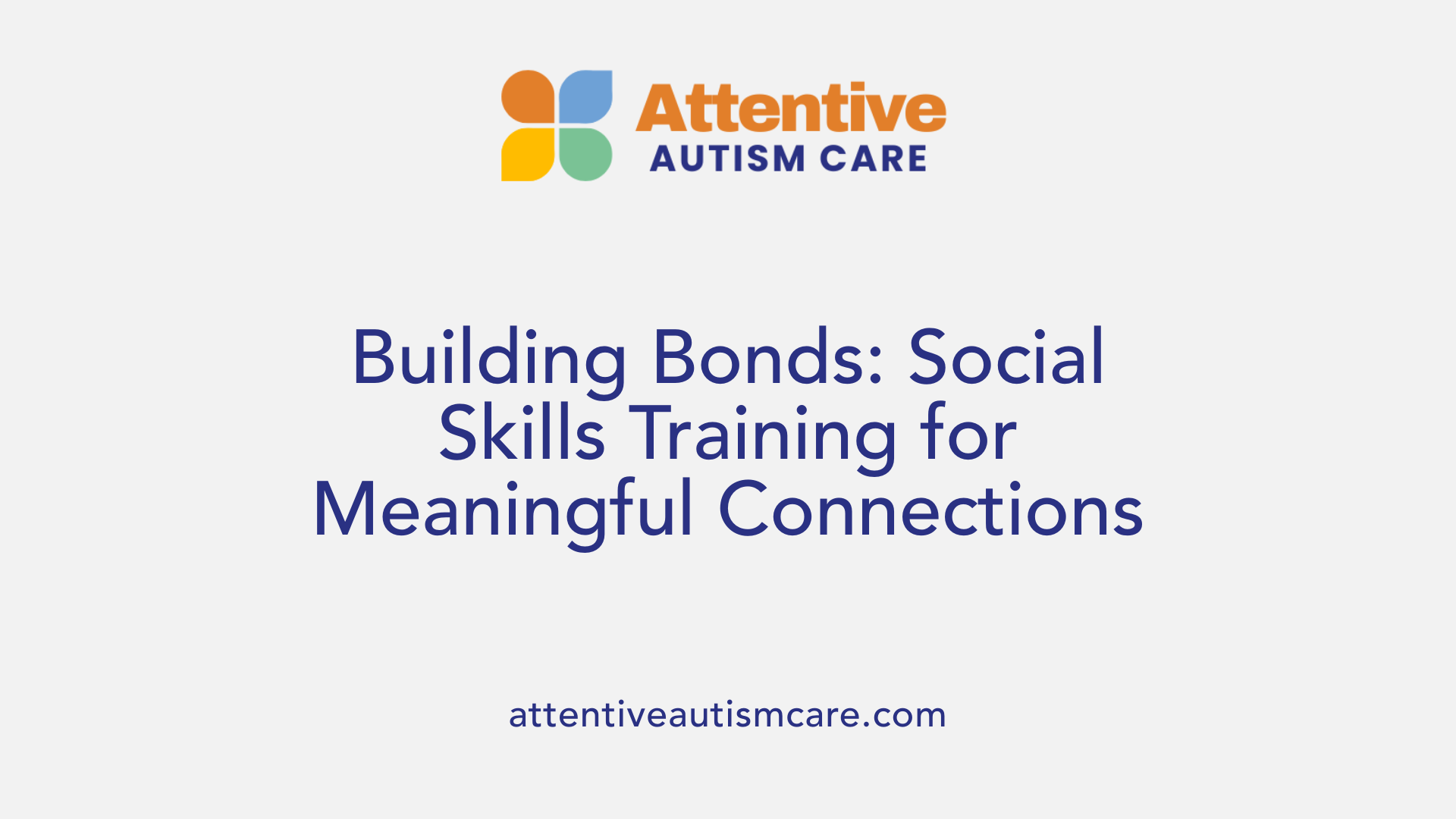
What Are Structured Group Interventions for Autistic Adults?
Structured group interventions are organized programs designed specifically to help autistic adults improve their social skills within a supportive community setting. These interventions focus on teaching practical social behaviors and cues through repetitive and engaging activities.
How Do Role Plays, Modeling, Homework, and Caregiver Involvement Work in PEERS YA?
The PEERS YA program is a standout social skills training approach. It uses role plays and modeling to demonstrate appropriate social behaviors. Participants then practice these skills at home through homework assignments, reinforcing learning. Caregiver involvement provides additional support, helping to guide and encourage individuals outside the sessions.
What Improvements Are Seen in Social Responsiveness, Cognition, and Loneliness?
Participants in social skills training such as PEERS YA often show increased social responsiveness—meaning they better understand and react to social cues. Social cognition improves, enabling clearer interpretation of others' thoughts and feelings. Importantly, these programs also help reduce feelings of loneliness by boosting confidence and facilitating meaningful interactions.
What Adaptations Support Understanding During Training?
To make these interventions accessible, adaptations like clear, concrete language and defined rules are used. This structure helps autistic adults better grasp concepts and expectations, minimizing confusion and improving engagement.
How Are Effects Sustained and Generalized to Real-World Interactions?
One of the strengths of these programs is the lasting impact they have. Through ongoing practice, homework, and caregiver support, individuals maintain gains over months. Moreover, skills learned are generalized to everyday life, improving community involvement and personal relationships.
| Component | Description | Benefit |
|---|---|---|
| Structured Group Setting | Organized sessions focused on social skill building | Provides safe environment for practice |
| Role Plays & Modeling | Demonstration and enactment of social interactions | Enhances understanding and skill acquisition |
| Homework Assignments | Practice exercises outside sessions | Reinforces learning and generalization |
| Caregiver Involvement | Support and encouragement beyond sessions | Sustains progress and motivation |
| Adaptations | Clear language, concrete rules | Improves comprehension and engagement |
Technological Advances and Telehealth in ABA Delivery
Integration of technology in ABA programs
The use of technology in Applied Behavior Analysis (ABA) has transformed therapy delivery, making it more personalized and efficient. Digital tools help collect and analyze data on behavior patterns, allowing therapists to tailor interventions precisely. Devices like tablets and apps facilitate interactive sessions, supporting skill development through engaging, multimedia content.
Telehealth options increasing access and flexibility
Telehealth has significantly expanded access to ABA services for adults with autism. Remote therapy sessions enable individuals to receive consistent care without geographic or transportation barriers. This flexibility benefits clients with varying schedules and needs, ensuring uninterrupted progress in their treatment plans.
Data-driven adjustments via digital tools
Digital platforms allow real-time tracking of client progress through automated data collection and reporting. Therapists can quickly identify trends and modify interventions based on evidence, ensuring therapy remains effective and responsive to the individual's development.
Supporting client autonomy through technology
Technology empowers clients by incorporating their preferences and feedback into therapy. Tools that promote self-monitoring and choice-making encourage greater independence and confidence, aligning with ABA's goal of fostering autonomous skill use in everyday settings.
Current trends in virtual behavioral therapy
Emerging trends include virtual reality environments and online social skills groups tailored for adults with autism. These innovations provide immersive, controlled scenarios for practicing social interactions and coping strategies, complementing traditional ABA approaches in a safe, scalable manner.
Life Skills and Transitional Living Training
Preparing Autistic Adults for Independent Living
Life skills and transitional living training are essential elements in supporting autistic adults toward greater independence. These programs focus on equipping individuals with practical abilities needed to manage everyday life confidently and autonomously.
Training in Budgeting, Job Readiness, and Self-Care
Key skills taught include budgeting to manage personal finances, job readiness activities such as interview preparation and workplace behavior, and essential self-care routines. These targeted trainings help bridge the gap between dependence and independent adulthood.
Use of Visual Supports and Structured Routines
To facilitate learning, visual supports like picture schedules, charts, and task checklists are commonly used. Structured routines reduce uncertainty and anxiety, making it easier for participants to understand and follow daily tasks systematically.
Parent and Caregiver Coaching to Sustain Skills
Programs often involve coaching for parents and caregivers, empowering them to reinforce and maintain newly acquired skills at home. This guidance ensures that progress achieved during training continues to grow in real life.
Fostering Confidence and Autonomy Through Practice
Regular practice opportunities in real-world or simulated settings help autistic adults build confidence and become more self-reliant. The repetitive and supportive nature of these interventions encourages autonomy and promotes long-term success in independent living.
Addressing Co-occurring Conditions Through Behavioral Approaches
How Are Anxiety, Depression, and Obsessive Behaviors Managed in Autism?
Managing co-occurring conditions such as anxiety, depression, and obsessive behaviors is crucial in supporting autistic individuals. Behavioral approaches, particularly Cognitive Behavioral Therapy (CBT), are highly effective in addressing these challenges. CBT helps modify negative thought patterns and behaviors, providing structured strategies to manage emotional difficulties.
What Role Do Mindfulness-Based Therapies Play?
Mindfulness-based therapies, including mindfulness-based stress reduction (MBSR) and mindfulness-based therapy (MBT), complement CBT by teaching skills focused on awareness and acceptance of present-moment experiences. These approaches have shown promise in reducing anxiety, rumination, and depressive symptoms, helping autistic adults improve emotional regulation.
How Are Sleep and Eating Problems Addressed Behaviorally?
Sleep disturbances and eating issues are common co-occurring problems in autism. Behavioral interventions such as fading bedtime routines, extinction methods, scheduled awakening, and contingency reinforcement effectively alleviate sleep difficulties. Similarly, targeted behavioral strategies help improve eating behaviors, with parent involvement enhancing long-term success.
Why Is It Important to Broaden Life Skills by Addressing Emotional Regulation?
Emotional regulation significantly impacts social functioning and independence. Addressing emotional well-being in behavioral plans broadens life skills, supporting individuals to cope with stress, interact socially, and engage in daily living activities confidently.
What Is the Importance of Individualized, Multidisciplinary Treatment Plans?
Co-occurring conditions require comprehensive, tailored interventions involving multiple disciplines. Personalized treatment plans combining ABA, CBT, mindfulness, occupational therapy, and speech therapy ensure holistic support. This multidisciplinary approach adapts to individual needs, fostering better outcomes in both behavioral health and life skills.
| Aspect | Intervention Type | Description |
|---|---|---|
| Anxiety, Depression, Obsessive Behaviors | Cognitive Behavioral Therapy (CBT) | Structured therapy targeting thoughts and behaviors |
| Emotional Regulation | Mindfulness-Based Therapies | Techniques enhancing present-moment awareness and acceptance |
| Sleep and Eating Issues | Behavioral Interventions | Fading, extinction, and reinforcement to modify routines |
| Life Skills Broadening | Multidisciplinary Plans | Combining therapies for social, communication, and daily living skills |
These behavioral approaches offer evidence-supported ways to manage co-occurring conditions, improving quality of life for autistic individuals across the lifespan.
The Future of Behavioral Interventions in Autism Support
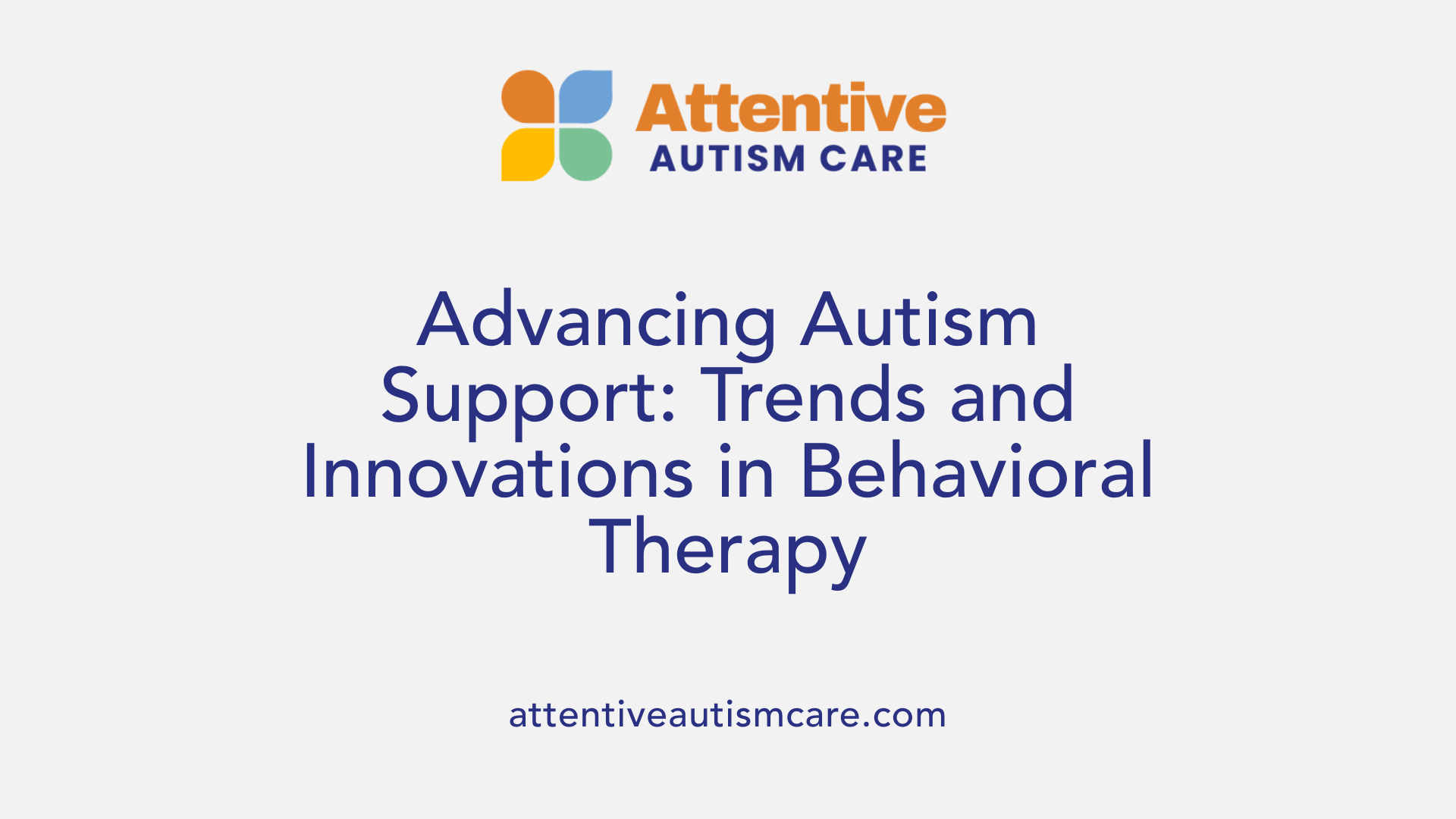
Why is there a need for larger randomized controlled trials in autism behavioral therapies?
Despite the promising results of many behavioral interventions like ABA and CBT, larger randomized controlled trials (RCTs) are essential to confirm their long-term effectiveness. Current research shows improvements in social, communication, and adaptive skills, but sustained data over years is limited. Expanding rigorous trials will help clarify not only how well these therapies work over time but also which approaches are best suited for different individuals.
What ongoing research is shaping new behavioral therapies?
Emerging studies focus on refining existing methods and developing new ones that blend behavioral principles with developmental and holistic perspectives. For example, integrating technology and telehealth expands therapy access. Programs are increasingly combining evidence-based practices with mindfulness, social skills training, and cognitive-behavioral techniques tailored to unique individual profiles and co-occurring conditions like anxiety.
How might accessibility and insurance coverage evolve?
Efforts are underway to improve insurance reimbursement policies for medically necessary behavioral treatments beyond childhood into adulthood. Expanding coverage, especially for adults, could reduce financial barriers. Telehealth services and parent-mediated approaches also promise greater reach, particularly in underserved or rural areas. Consulting insurance providers about coverage and eligibility is becoming an important step for families.
What trends are emerging toward personalized, holistic approaches?
Behavioral interventions are moving beyond isolated skill training toward comprehensive plans that address emotional regulation, independence, and quality of life. Therapies are increasingly individualized, combining ABA, occupational, speech, and psychological support harmoniously. Emphasis on client autonomy, cultural sensitivity, and technology use advances this personalization.
How do family and community support sustain therapy gains?
Involving caregivers and community members in treatment enhances generalization and maintenance of skills learned during therapy. Parent and caregiver training, social-support groups, and collaborative community programs create environments that reinforce progress. This collective approach fosters sustained behavioral improvements and life success for individuals with autism.
This evolving landscape in behavioral interventions heralds more effective, accessible, and person-centered support for individuals with autism across the lifespan.
Empowering Autistic Adults Through Evidence-Based Behavioral Support
Applied Behavior Analysis (ABA) and complementary behavioral therapies offer a scientifically supported foundation to enable autistic adults to develop crucial life skills. By enhancing communication, social engagement, adaptive living, and emotional regulation through individualized strategies, these approaches foster greater independence and participation in community life. As interventions continue to evolve with technological innovations and broadened accessibility, ongoing research and multidisciplinary collaboration remain key to maximizing outcomes and quality of life for autistic adults worldwide.
References
- Applied Behavior Analysis (ABA)
- Psychosocial therapeutic approaches for high-functioning ...
- Treatment and Intervention for Autism Spectrum Disorder
- Behavioral Interventions for Autism Spectrum Disorder
- Treating adaptive living skills of persons with autism using ...
- ABA Therapy for Adults: Real-Life Growth and Support
- 10 Essential Behavioral Therapy Techniques for Autism ...
- Applied Behavior Analysis (ABA)
- Applied Behavioral Analysis (ABA) Therapy








